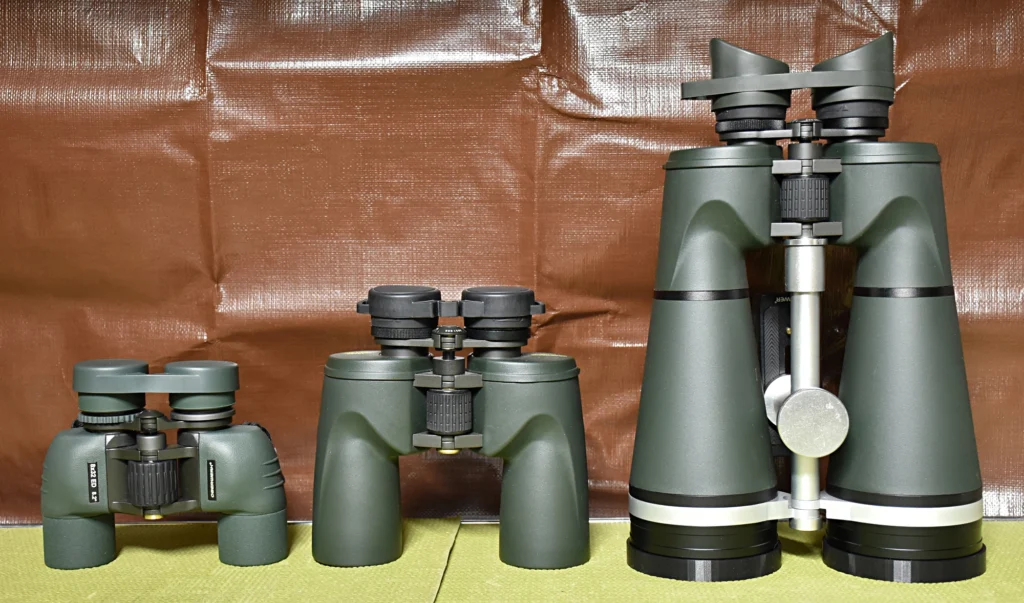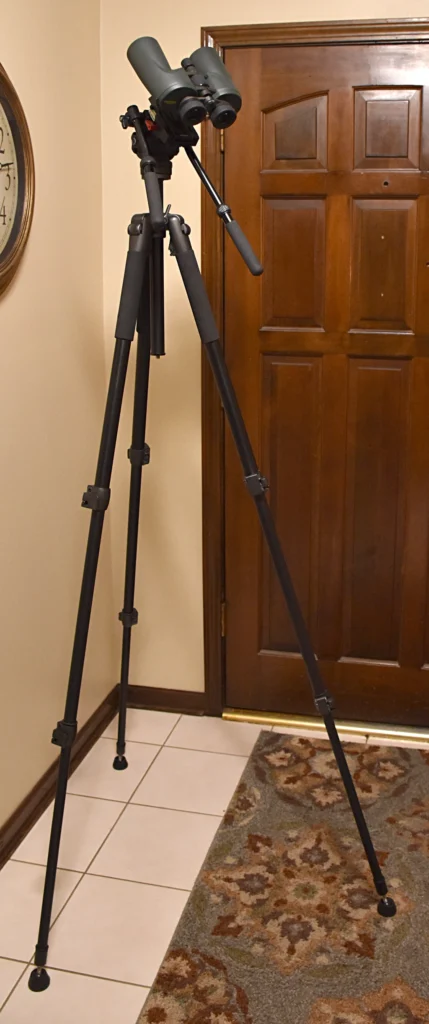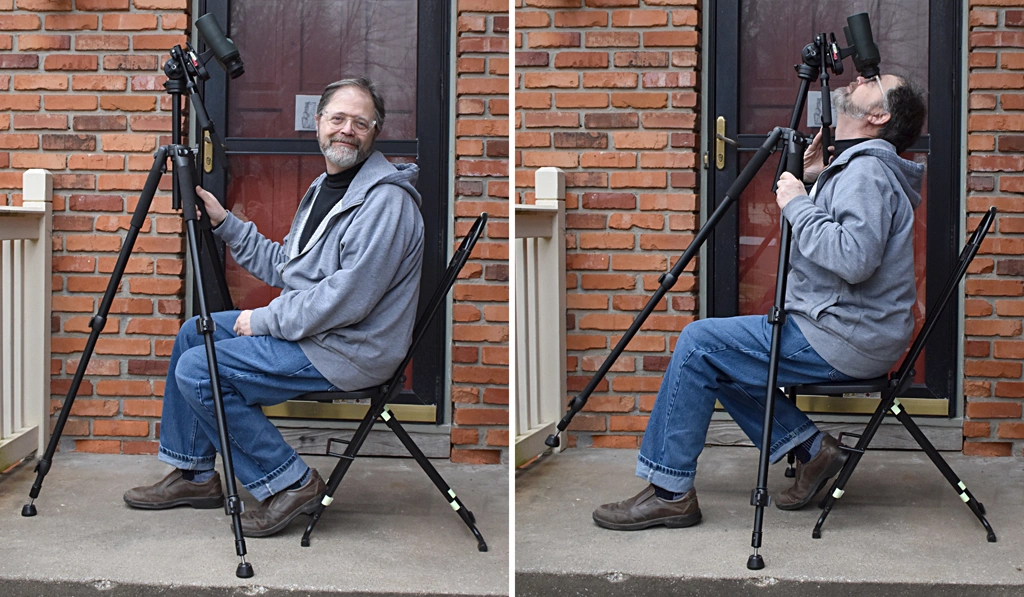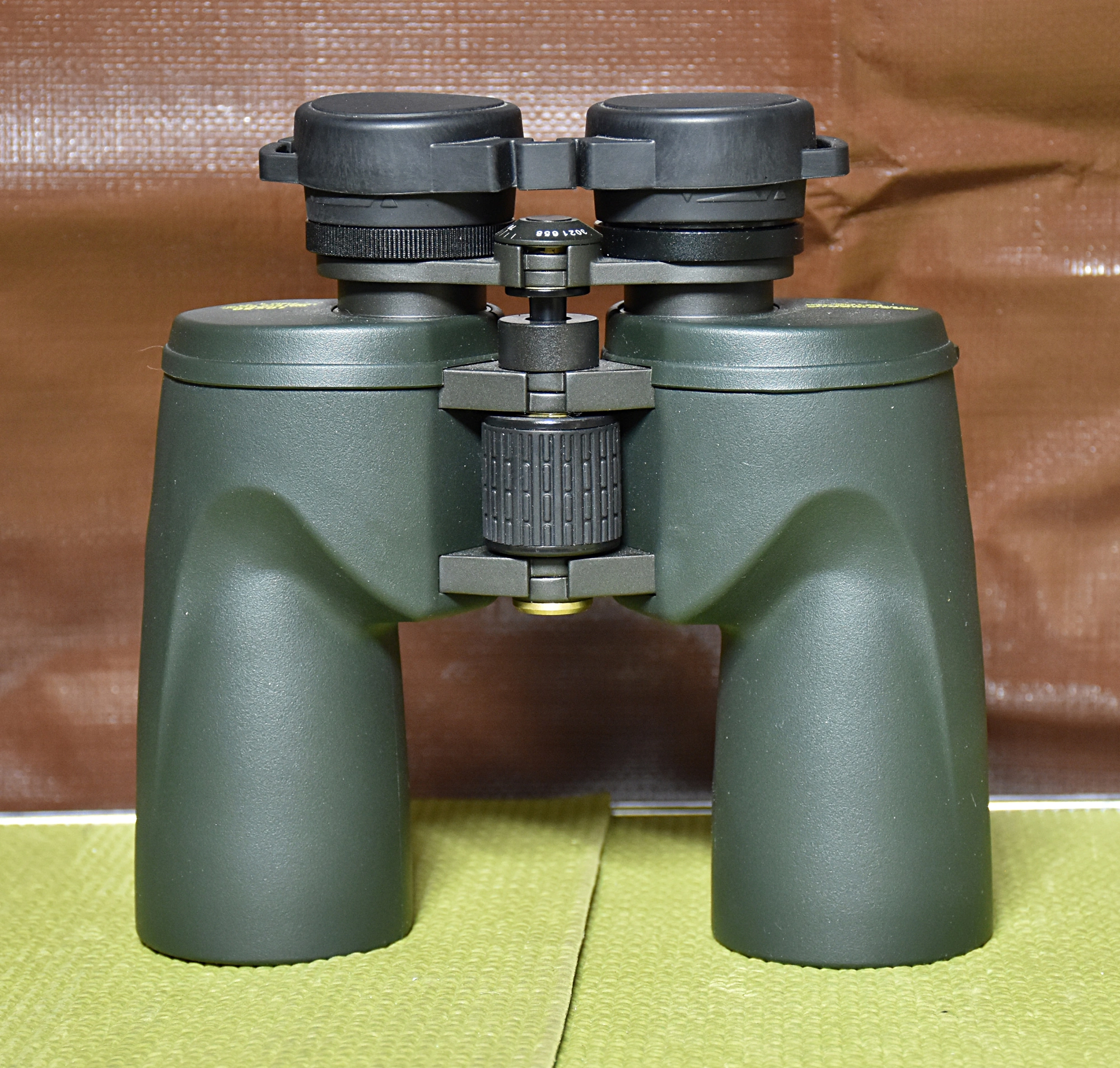An advantage of binocular astronomy (compared with telescopes) is that you don’t need much equipment to get started. Still, the variety and number of binoculars available is daunting so choosing one can be complicated. And do you need anything other than a binocular?
Here is what I recommend.

This is an Oberwerk 10×50 Deluxe binocular. The number 10 means that it magnifies 10 times and the number fifty means that the objectives (the big end) are 50mm in diameter. For handheld observing, 10x is about the maximum comfortable magnification. And 50mm objectives gather sufficient light to show many night sky wonders, but the instrument is still light and easily handled. Why this particular binocular? It is one of the best quality binoculars for astronomy available for under $200. It is sharp and bright, holds focus well, feels good in the hands, and is durable and robust. Plus it is backed up by outstanding customer service and support from Oberwerk.

The 10×50 Deluxe is shown in this image with two additional binoculars to provide a better understanding of the selection criteria. From left to right these are the Oberwerk 8×32 SE, the 10×50 Deluxe, and the 20×80 Deluxe III. All are great for astronomy in their own way. The 8×32 is smaller, lighter, and has a wider field of view (8.2 degrees). The lower magnification is easier to hold steady and the wider field is good for scanning constellations and viewing star fields. It is not as effective for observing deep sky objects compared with the 10×50 Deluxe due to the lower magnification and smaller objectives. The 20×80 (20x magnification with 80mm objectives) is better for viewing deep sky objects, but it is too large and heavy to be hand held, and has only a 3.25 degree field of view — much smaller than the 10×50 Deluxe. This is why 10×50 instruments are recommended as a general purpose astronomy binocular. They represent an ideal balance between smaller, lower magnification and larger higher magnification binoculars. Hint: starting with a 10×50 doesn’t mean you can’t add more binoculars later. 😉
Once you have a 10×50 binocular, are you ready to go? Sure. You can get started using the instrument hand held. A comfortable lawn chair, maybe a zero gravity chair, a constellation guide and some kind of star chart showing constellations and brighter objects, either printed or a mobile app like Sky Safari, and a dim red flashlight for preserving night vision when studying printed charts, and you can start observing.
Equipment Item 2

However, I recommend adding a second item to your basic equipment list. It significantly increases the detail that can be seen, improves ease of use, and is rarely ever considered for binocular astronomy – a binocular mount like the Oberwerk 4000 series tripod/head combo.
I own many binocular mounts, but this light-weight tripod is my most used. With the legs folded together it stands by my front door ready for observing. I mostly use it standing for quick looks. But it also works well from a seated position, which is more comfortable for viewing close to the zenith. It is important to choose a tripod which is sufficiently tall to hold the binocular overhead for standing use. The OB 4000 tripod is one of the few available with adequate height (max heigh 78 inches).
The additional detail that can be seen with a mounted binocular compared to a hand held instrument is remarkable. It literally transforms the observing experience, and with a bit of practice and adjustment becomes second nature. A mounted binocular can be left pointed at whatever constellation, star field, or object while you consult charts or guides, or while you write notes. The benefits are so considerable, and the accommodations are so easy to make, I rarely ever observe with a hand held binocular.



Do you ever have to add dew shields or use dew heaters while you observe with mounted binos?? I’m not sure about the KC area, but here in the humid mountains of NC, dew heaters are a must for me if I’m observing a few hours or more. Dew shields work fairly well to extend sessions but usually won’t make it past midnight.
I use 2″ heaters around the objectives of my 70mm and below binos when mounted, since they’ll just fit around the 70s. I use a dew shield on my 100mm but plan to get a few 4″ strips to use with those as well.
Oberwerk XL binocular telescopes have built in dew shields that slide out for use. Also, when observing from home, dew is rarely an issue because of all the buildings, trees, and the concrete mass in the urban area. Dark sky sites are another matter, however. 😏I haven’t made dew shields for the straight through binoculars. When I am not actively observing with them on dewy nights in the field, I keep them covered with towels. I’ve also have a notion to make warming covers for them when not in use. Also, typically carrying a dozen straight through binoculars, instruments can be switched between the van and the mounts when an instrument dews up. I also have a 12-volt dew-blaster. Typically I am hoping for a light breeze at dark sky sites to keep the dew at bay. Perfectly still night are the worse.
Enjoying your blog Fiske! Great article. A few months ago I purchased the Oberwerk 10×50 Ultras due, in large part, to your positive comments on the Cloudy Nights forum. I’m enjoying them immensely. My first visit to your blog and I’m working my way through your articles – good work!
Thank you for your comment, Bruce! 🙂I’m glad you discovered the 10×50 Ultra and am happy you are enjoying this blog.
I’m curious to see what the viewing difference is between the binocs and my Starhopper. Maybe we will have to have a viewing demonstration soon.
Thanks for your inquiry, Davester. Apologies for my tardy reply. A binocular/telescope observing session (after our current power outage is resolved 😕) sounds great.